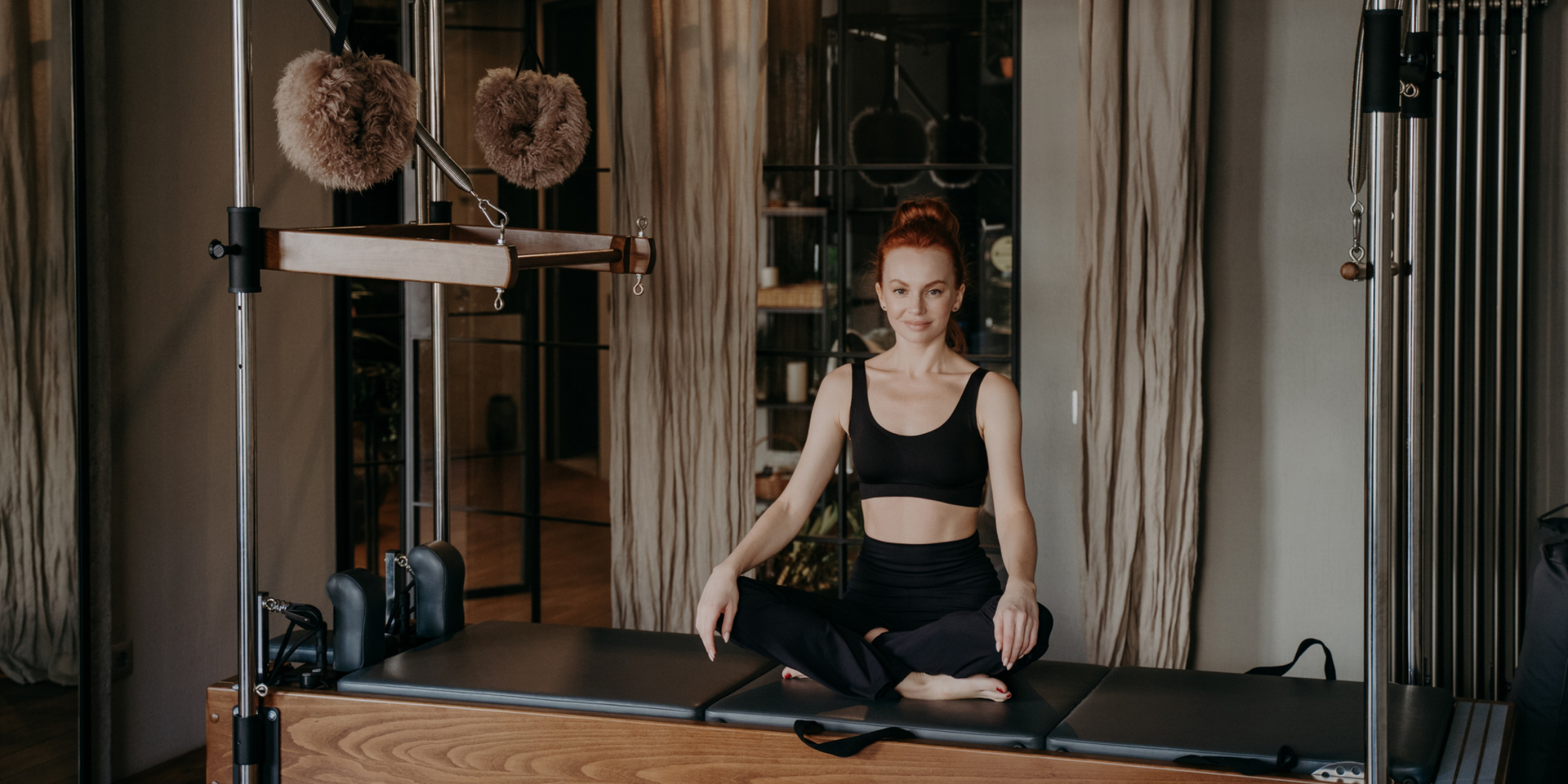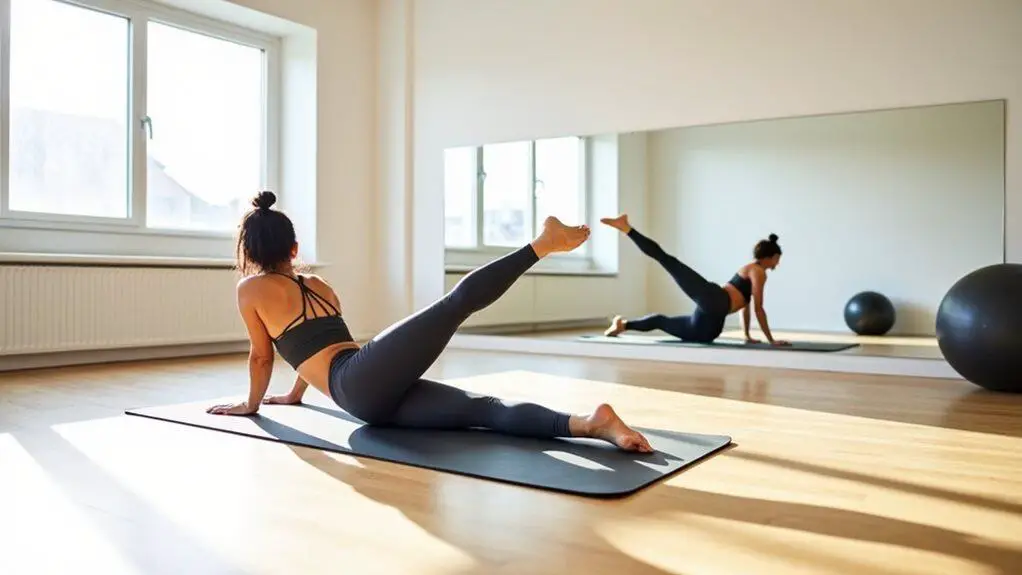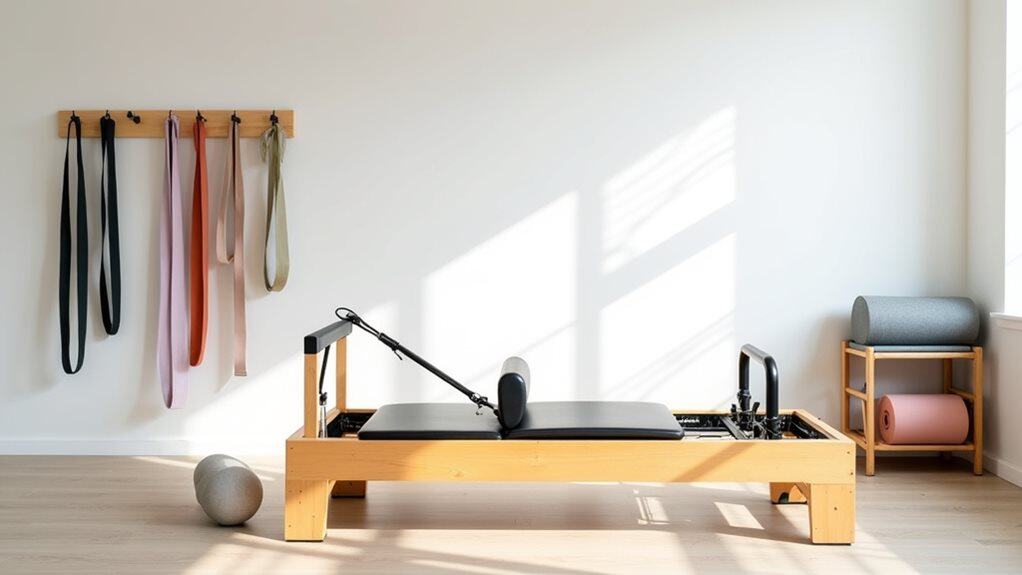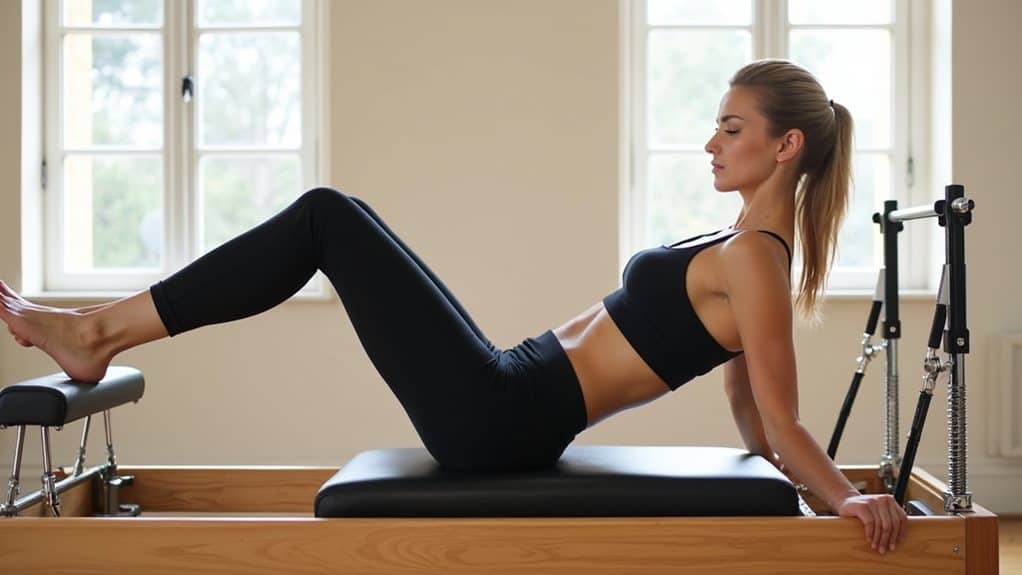In the dynamic world of Pilates, equipment, and apparatuses play a pivotal role in enhancing exercises and ensuring practitioners achieve optimal results. Among the most iconic pieces are the Trapeze Table and the Cadillac. While they may appear similar to the untrained eye, each brings unique attributes and functionalities.
This article delves into the nuanced differences between the Pilates Trapeze Table and the Cadillac, guiding enthusiasts and practitioners alike to a deeper understanding of these essential tools.
Structural Differences: Anatomy of the Trapeze Table and Cadillac
The Pilates realm offers many pieces of equipment, each designed with specific anatomical structures to cater to varied exercises and goals. Two standouts in this domain are the Trapeze Table and the Cadillac.
Often referred to as the “Trapeze,” this piece of equipment resembles a table with a raised metal frame extending above it. The primary distinction is the trapeze bar suspended from the top, which can be adjusted to different heights, allowing for various exercises. Supporting this bar are a series of springs and loops, providing resistance and support. This structure is essential for exercises that require hanging, swinging, or pulling motions, enabling users to challenge their strength, flexibility, and balance in unique ways.
With a moniker borrowed from the luxury automobile, the Cadillac exudes a premium Pilates experience. Its structure is more expansive than the Trapeze Table and can be considered a larger, more comprehensive piece of equipment. It combines elements of the reformer and the trapeze table, boasting a sturdy rectangular frame surrounded by various attachments like leg and arm springs, a push-through bar, and trapeze springs. These attachments, combined with its versatile design, mean the Cadillac offers a broader range of exercises, from gentle, rehabilitative movements to more dynamic and challenging routines.
While the Trapeze Table and Cadillac are designed to enhance the Pilates experience, their structural differences highlight unique functionalities tailored to specific exercise needs and outcomes.
Functional Applications: How Each Equipment Enhances Pilates Practice
The beauty of Pilates lies in its adaptability and the wide range of exercises it offers. Equipment like the Trapeze Table and the Cadillac not only provides variety but also intensifies and refines the practice, targeting specific muscles and movements. The functional applications of these apparatuses underscore their significance in a comprehensive Pilates regimen.
- Trapeze Table
Designed with versatility in mind, the Trapeze Table offers exercises that cater to both beginners and advanced practitioners.
The adjustable trapeze bar and its various springs and loops facilitate movements that target core strength, flexibility, and limb mobility.
Its functional application is especially notable for spinal articulation exercises, allowing for movements like the “Teaser” and “Swan Dive” with added resistance or support.
Moreover, the hanging components enable inversion exercises, which are beneficial for spinal decompression and improved circulation.
- Cadillac
A fusion of multiple Pilates equipment elements, the Cadillac is a hub of functional diversity. Its wide frame and many attachments mean it can support exercises suitable for rehabilitation, strength-building, and deep stretching.
The push-through bar, for instance, can be used for controlled spring resistance exercises, honing stability and core engagement.
Meanwhile, the arm and leg springs allow for targeted muscle work, from sculpting the arms to strengthening the legs.
Its design also means it’s suitable for people with various needs, from athletes looking for cross-training to individuals in post-injury recovery.
Ultimately, the Trapeze Table and Cadillac bring forth distinct functional applications that enrich the Pilates practice. By understanding how each piece of equipment serves the body’s movements and needs, practitioners can make informed decisions about their routines and goals.
Safety and Adjustability: Catering to Individual Flexibility and Skill Levels
In the intricate dance of Pilates, safety and personalization stand paramount. Introducing equipment like the Trapeze Table and Cadillac adds layers of complexity, making it essential to understand their safety features and adjustability.
These apparatuses are meticulously crafted to cater to a wide range of individual needs, ensuring that every practitioner, irrespective of their skill level, can embark on a wellness journey with confidence and security.
- Trapeze Table:
- Stability: Designed with a robust base to offer users a secure foundation during exercises.
- Adjustability: Features adjustable springs, loops, and bars to set desired resistance and height.
- Tailored Exercises: Allows modifications to accommodate varying levels of flexibility, preventing overextension or strain.
- Safety during Inversions: The high frame provides adequate support, ensuring safe and confident practice.
- Cadillac:
- Comprehensive Design: The wide frame safeguards, preventing accidental falls or rolls.
- Customizable Resistance: Adjustable springs and bars cater to beginners and experts, offering the right resistance level.
- Support for Rehabilitation: Its structure supports gentle and controlled exercises, ideal for injury recovery.
- Versatility: With multiple attachments, it can be tailored to suit individual needs, enhancing safety and efficacy.
Both the Trapeze Table and Cadillac serve as exemplars of safety and adaptability in the world of Pilates. Their design ensures that every practitioner, regardless of their experience, can explore the depths of this discipline with assurance and precision.
Making the Right Choice: Determining the Best Fit for Your Needs
Pilates, a discipline renowned for its holistic approach to wellness, offers a range of equipment that amplifies its benefits. Two such notable apparatuses are the Trapeze Table and the Cadillac.
Both have earned their rightful places in studios worldwide, yet deciding which to incorporate into one’s regimen can be puzzling. By understanding the unique attributes of each, practitioners can make informed choices that align perfectly with their individual needs and goals.
- Trapeze Table:
- Focused Workouts: Ideal for those looking to target specific muscle groups or achieve particular movement goals.
- Space Consideration: Typically occupies less space than the Cadillac, making it suitable for smaller studios or home setups.
- Versatility: With its adjustable components, it caters to a wide range of exercises, from basic to advanced.
- Budget-Friendly: Generally, Trapeze Tables are less expensive than Cadillacs, which can influence purchasing decisions based on budget constraints.
- Cadillac:
- Comprehensive Range: With its fusion of various Pilates equipment elements, it offers a broader spectrum of exercises.
- Rehabilitation and Professional Use: Its design is favored for rehabilitative exercises and is often chosen by professional studios for its versatility.
- Larger Footprint: Requires more space due to its expansive design, an essential consideration for studio or home placement.
- Investment Piece: Generally priced higher than the Trapeze Table, but its multifunctional nature can justify the investment for many.
Deciding between the Trapeze Table and Cadillac is less about choosing the “better” equipment and more about aligning with personal or studio needs. Whether it’s space, budget, or the range of exercises desired, understanding these factors can guide individuals toward a choice that enriches their Pilates journey.
Sources:
https://sheppardmethodpilates.com/the-cadillac-vs-the-reformer-which-is-better/
https://modernreform.com/blogs/pilates-blog/pilates-cadillac-vs-reformer-whats-the-difference




